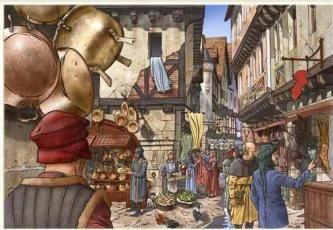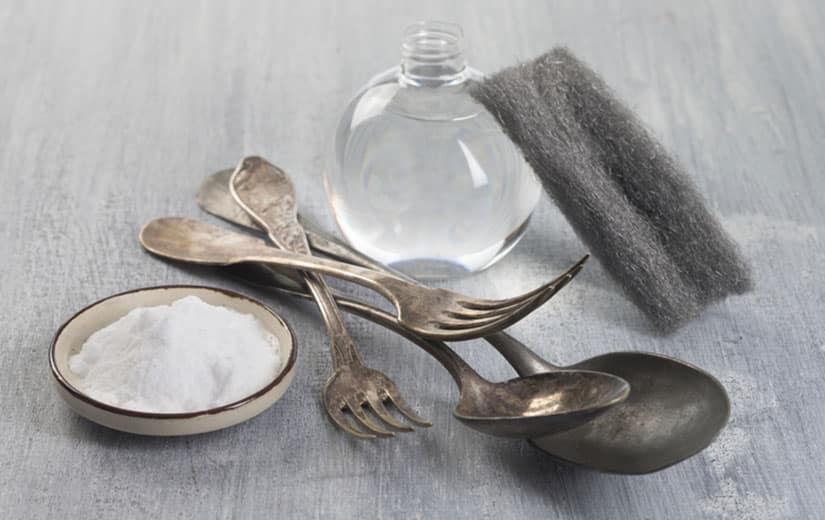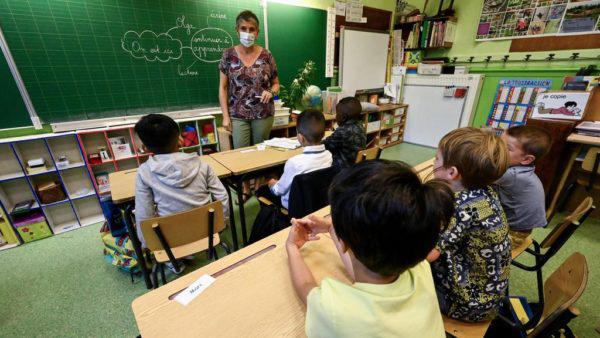
FPARTAGER Tweet
If access to running water and bodily hygiene were a major concern of the Roman world of antiquity, it was quite different in the Middle Ages.Likewise, if the word pollution existed little in the medieval vocabulary, as surprising as it appeared, it would have been appropriate ... Urban representations of the Middle Ages, iconographies, master works, engravings, tapestries and sculptures show us streetsShapeless cobblestones bordered by well -aligned houses.The reality of the time is very different.
Street nuisances
The archives abound in ordinances, trials, deliberations, surveys on an unlverary observation. The toponyms (names of the streets and alleys) evoke `` infected cloaaque '' whose appellations: rue Cave, Punish holes, La Sale, Fireuse, Basse-Fesse, du Bourbier, are revealing of tracks filled with dirt of all kinds ... What to say about rue Creuse, Alevasse, Bougerue, Pipi, rue des Aysances, de la Tricerie? Or these charming little names given to certain streets and alleys of our cities: Merderons, Merdereaux (used for runoff) Merderouille, Merdaric, Merderel, Impasse du Merdron, du Cloaca or Fosse -du -Poull.yon that alludes to Film presences? There is a place in Lourdes Marcadal (set district) and nauseating ditches mentioned in 1412. The writings of the time used very varied expressions when it came to evoking the excrement, the pestilence, the malodious. As for the orderly vocabulary exchanged during the frequent arguments of streets or dubious jokes, it was of a "Rabelaean green" as if all of the population made an anal fixation!
Also mentioned are the nuisance caused by construction sites, overflowing workshops on the roadway, individuals of individuals, gravel, filth, fiens, tassons ponds and broths generated by rainwater.The street represents a real danger for the one who borrows it because the dirt, runoff, carts, horses, poultry pigs, stray dogs and itinerant merchants do not facilitate traffic.
Men, women of the Middle Ages and animals release daily on the roadway of organic materials: excrement, blood of the many bloodlettings, guts and viscera near slaughterhouses or fishmongers.The tortuous and congested streets retain the waste in heaps massaged in front of the carriage doors.The receptacles of this pollution are the roads certainly but also the public places, the canals, the countless channels which crisscross the urban territory, the streams, the rivers, the ponds and the rivers.
In Antiquity, Egyptian, Assyrian, Greco-Roman civilizations have bequeathed to solid bulging flanges to facilitate the flow of water, but the secondary routes poorly protected by clay and pebble coatings did not resistat the time.
In addition, the laxity of councilors, individual selfishness and lack of conscience worsen the situation.Only major events (processing of procession or royal entry) oblige municipalities to take rapid hygiene measures.Before the entry in 1487 King Charles VIII to the city of Pont-Audemer in Normandy, sixty days of maneuvers are necessary to wear "outside the sludge and other immundicite streets and markets".
Cities are brushing in surveys following complaints that multiplied during the 15th century.
The professions incriminated are those of the metallurgy of the textile of the dye, the skin (migrant tanners parchment) of the diet (fishmongers butchers).The working -class districts of the lower city are more threatened than those of the notables in the upper city favored by the slope and by more complete sewer circuits.For the rich, "doing your aysses and defilements" at home is a sign of ease in the same way as having a well, a stable or a single room.But the conduits buried in the beautiful districts lead to the open air below near the cattle market before joining the populous district!
The periods of political instability, the passage of soldiers, of epidemics contributed to weakening the possibilities of self-defense of humans.During a hundred years war period, paving or development costs were considered secondary.
Animal and human pollution
Human organic pollution results from an overload of residues from the necessities (the word is medieval): "We let go of its waters" "we defecate or more poetically we make" its aysses and defilements "its changes, we spit with casualness n'Import or in the Middle Ages, the chagrin of passers-by.Everyone meets their needs on the pavement, in the channel called according to the places, Essiau Gazilishant, Garillans '' at the foot of the facades of the dwellings, or in the central channel, in the dead ends in the courses of buildings, passages orFrequent Lyon traboules at that time, under the halls, on the forecourt and under the portal of churches!We empty through the windows the pots to be pissed, the dirty waters, the trash, despite the edict of 1342 which prohibits the practice (the habit is said to be second nature).
Most of the time the farmyard animals and the pork herds wander in the restricted space of the streets, in the middle of passers-by, between the stalls, in search of food, causing accidents and bad smells. Their owners argue that they are useful for supplies and serve '' of municipal '' garbage. From any butchers and cold meats work in the urban center, their stalls overlooking the street, they slaughter and run on the pavement in the absence of specific equipment. The "escorcheries" or "Tuyeries" left us memories: rue Massacre in Rouen, Bourc-aux-Tripes, Les Bouiauxls. The hundreds of animals killed on the spot flood the pavement of liters of blood, putrefied tripe, bloody skins, stagnant and attracting insects, towards and rats before joining the central channel, at the sight and the smell of residents. Likewise for fishmongers, tripiers the ciergiers who run the fat on the pavement.

Wandering animals, formidable plagues, promote infectious diseases.Dogs, cats (whose fate is not enviable in the Middle Ages because of their evil reputation) rats and other pests proliferate, they are with mice, fleaks the mosquitoes responsible for serious skin infections and vectorsof plague.Wolves, pushed by hunger in winter, scour the streets and attack the weakest.
Chemical pollution
Medieval craftsmen are formidable for the neighborhood because for lack of space they work on the roadway on which locksmiths of tallow, blacksmith spreads liquid fermentation and black boilers. The Essonne and Troye stationery mills produce a '' the '' dough "based on macerated rags and infamous glue containing alum and skin clips giving off unuscent smells. In the mines, lead is responsible for Saturnine poisoning, as well as the silicate of the quarrymen, causing inconclusive vomiting and tremors (Dance of St Gui) in the workshops of the wins the sulfur vapors, the handling of animal and vegetable substances toxic and plants Tannic extracts, soda, urine serve as a detergent and accelerate the putrefaction of the fibers. The proximity of the chauchières (tanks) of tanners, tanks filled with dyeing (garance) of saltpeter and lime represent a danger.
The residual waters loaded with waste evacuates in the rivers.Washing and dyeing fatty fabrics aggravate pollution as well as the peaisserie, the parchment, the mégisserie tannage.The atmosphere is then saturated with repulsive smells of toxic fumes of carbon oxides of soot particles that the ovens, tanks or droppings.
Hygiene in the Middle Ages
Individual and collective grime ends up harming the environment creating the infectious air from the poorly washed bodies of dirty and used clothes for ordinary people, because the too rare public spots at the time (twenty -seven in Paris for200,000 people in 1290) are not for the poor.The most favored are washing in copper or tin basins or have boilers or water kettles to wash your hands.But the public opinion of the 15th century considers grime as natural protection, a barrier to infection!(confirmed by medicine treaties) rather than '' succumbing '' to the plague we prefer to leave your body covered with crusts and vermin will tell the fierce opponents of public baths.
Odors also come from unhealthy and poorly insulated housing of stagnant water cellars in the courses.The housing of the shopkeeper of the worker's craftsman is narrow (three to five meters) and comes down to a nauseating jack.The modest houses of Chambéry or Middle Annecy (which have not resisted the centuries) are built in wood, dried stone in cob with thatched roof or tavillons (wood tiles) badly protected from the cold and theHumidity subject to frequent fires due to approximate heating modes.
Nowadays, walkers are raising in front of medieval houses, admire the cantilevered floors, the assemblies of the joists the sculpted wooden sides, the brands, the stained glass windows.These are in fact exceptional testimonies of the habitats of notables, beautiful particular "ostels" that have gone through centuries at the cost of several restorations.They do not in any way reflect the daily life of the people.
Noise pollution and the evolution of the urban fabric
In addition to the cacophony of the enhancements of craftsmen and hawkers, to the vituperations of drivers of unhappy carts to be blocked or a troop of riders is added the tintamarre of children who play or the cries of the "folastres" the catchphrases of asinger or juggler, the carillon of bells who respond from one church to another.All these noises add up in the resonance boxes that are the cramped streets.The poor people are woken up overnight by the cries of the carts of the night owls and the soldiers of the watch.By day, splashed with mud breathing the miasmas, jostled by workers loaded with materials, the porters of itinerant merchants, the infirm the turbulent children, the dogs and the pigs, attacked by the thieves at the draw and sometimes crushed by the clumsy drivers(traffic accidents are frequent) The life of passers -by is very difficult.
City dwellers are also used to leaving construction materials of slate tiles, old clum tools baskets and cageots through the roadway. Each makes spread and sells on the pavement in an anarchic footprint. The wheels of the carts, the trampling of the hooves disjoint the cobblestones or the pebbles of the coatings multiply the nests of hens and the ruts of the streets in the middle of which a central gutter collects rainwater, the dirty waters of the workshops and households, the urine and crottin. The overloaded districts are more numerous at the end of the Middle Ages (effect of urban growth and industrial prosperity) and are a source of conflicts and trials. The street is more than ever this "flooded esseau ort to see and dangerous at night". Master of cities are not lucky, as in Vannes to use the arrangements of antiquity and are confronted every day at a concentration of waste that the saturated nature can no longer ingest.
Aggravating situations and awareness
Other nuisances generated by unhealthy hospitals and poorly maintained cemeteries are also suspected of generating diseases.War wounded lying in the streets exhibit putrian wounds that are made by white weapons, arquebuses and other fires.Some have been verolled since the last expeditions of Charles VIII and Louis XII leaving infected dressings dragged and remedies made from mercury.The arrival of a troop, a state of siege or occupation marked their passage through mountains of garbage.
Since the Merovingian era the Middle Ages has been the scene of numerous lepers epidemics, black (or pestilence) and formidable bubonic plague (outfits for divine punishment by popular belief) making a third of the population disappear in 1348 (According to Froissard), resulting in consequences on commercial, administrative and military activities.The man of that time is completely helpless in front of these diseases whose microbial origin he ignored.
But the permanent vision and smell of the cesspool, the air corrupted by toxic fumes and the rotten vapors opened an awareness of the danger.We come to associate the destruction obstructing the street, the ubiquitous manure, animal and human materials spilled everywhere, oppressive waters, the corruption of poorly preserved food, fountain water from the fountains or everyone is soaring anything,Recurrent infections and diseases.Failing to predict in advance, because people of the Middle Ages act most of the time under the influence of necessity or fear, voices rise so that measures are taken to "oster and are aligning everythingThis may cause the cause and opportunity for corruption or infection of naked air to human body ”These spontaneous reactions led to the publication of prescriptions and the first sanitation measures.
From the 12th and 13th century of sovereigns like Philippe Auguste and Louis IX in Paris, the seigniorial and ecclesiastical authorities, the municipal magistrates denounce the nuisances under their multiple aspects.
First measurements (cleaning, purgation and emptying)
In the order of priorities are the provisions against everything that harms traffic or offends the gaze of the prince, the clerk or the rich bourgeois. Trials are multiplying against certain trades, measures taken for the authoritarian relocation of noisy and polluting activities that are transfers to the periphery of agglomerations. Cleaning systems are implemented for rivers and channels, the installation of services to clean the roads and the cobbled streets. The Millau consuls prohibit the spread of sheets of sheets and skins on the walls of the speakers. Already in 1374, Marguerite de Burgundy asked that her good city of Dijon be cleaned, justifying future municipal regulations. As early as 1243 Avignon councilors decreed "that no one should" geter by the Fenestres or moreover from top to bottom of dirty liquids, straw detritus human excrement, orine and other garbage ". Plas covered with board called filth pits are dug outside the cities to receive waste.
During the 15th century, the setting up of prescriptions targeted tanners, toulons, parchments (from rue Mercière to Lyon), dyers, scholarship ganiers les hemp rouisseurs, sink users of grilled barley, the Founders of Suif.We strive to move far from the political and religious centers and the frequented streets, the butchers and the fish reinstalled in suitable buildings.We also release the quays of very congested ports and rivers.
Pork breeding in town is regulated by four by families with a ban on letting them wandered.An intervention by the Archbishop of Reims defends the passers -bys''d'uriner '' in the bread hall and a fine of sixty Solz is given to those who do their needs in private places.The executioner and his aid his managers to exterminate the hordes of stray dogs.Hygiene rules are imposed on food professionals aimed at working methods, quality and conservation of products (fish and "orded and vile" decreed meat are prohibited for sale).In 1450 the bakers were required to maintain beards and hair, to wear clean shirts and not knead the dough with hands "infect ulcers".
Water treatment, new '' withdrawals or aysements ''
Protection against water pollution involves revising harmful habits and untimely spills.Decan the waters once a year, drain the stagnant waters unblocking the sewers downstream rather than upstream is an imperative for communities and users.The book of Rouen fountains by Jacques Le Lieur gives details on the situation of the city in 1525 (unique historical document).It will be necessary to increase the number of insufficient drinking water fountains in all cities placed under the protection of a fountain guard.Hydraulic arrangements;With locks and valves are sometimes set up to ensure the flow of water necessary for domestic and craft uses, industrial mills, as well as embankments to strengthen banks, breeding creations of water fishSoft (broom carp) to eliminate waste thrown into rivers.
The return to the methods of antiquity takes its rise in the 14th and 15th century with all to the sewer, development of networks of collectors aimed at ridding the urban space of its dirty waters, stones or rubble pipes covered with'slate.There are private conduits that lead to the river that owners must maintain.
In the 15th century, there were mostly collective "rooms for the seasons for the inhabitants", other private, rediscovered by archeology overlooking pits which implies in terms of public and family hygiene a considerable progress.These cabinets are located at the bottom of a courtyard or a garden, in a wardrobe an attic, or overhanging on the river, inside the dwellings in the thickness of a wall in a cage ofStaircase or hanging along a load -bearing wall.They are vaulted in rubble has a masonry duct, ventilation mouths and can be drained in the rear of the houses by professional emptyingrs.
The magnitude of the task, high costs, individual selfishness;private interests;The endless trials slowed the expansion of progress.But, despite everything that remains to be created in the Renaissance and in the following centuries to stop the misdeeds of pollution and those just as serious with the lack of hygiene, the Middle Ages in France (taxed with obscurantism) after a returnBack to several centuries, tried to straighten a situation that could have been catastrophic for humanity (while other countries more in advance such as Belgium Italy and the Nordic countries had shown the example).
Bibliography
-by Jean-Pierre Leguay: pollution in the Middle Ages, Editions Gisserot History, 1999.







